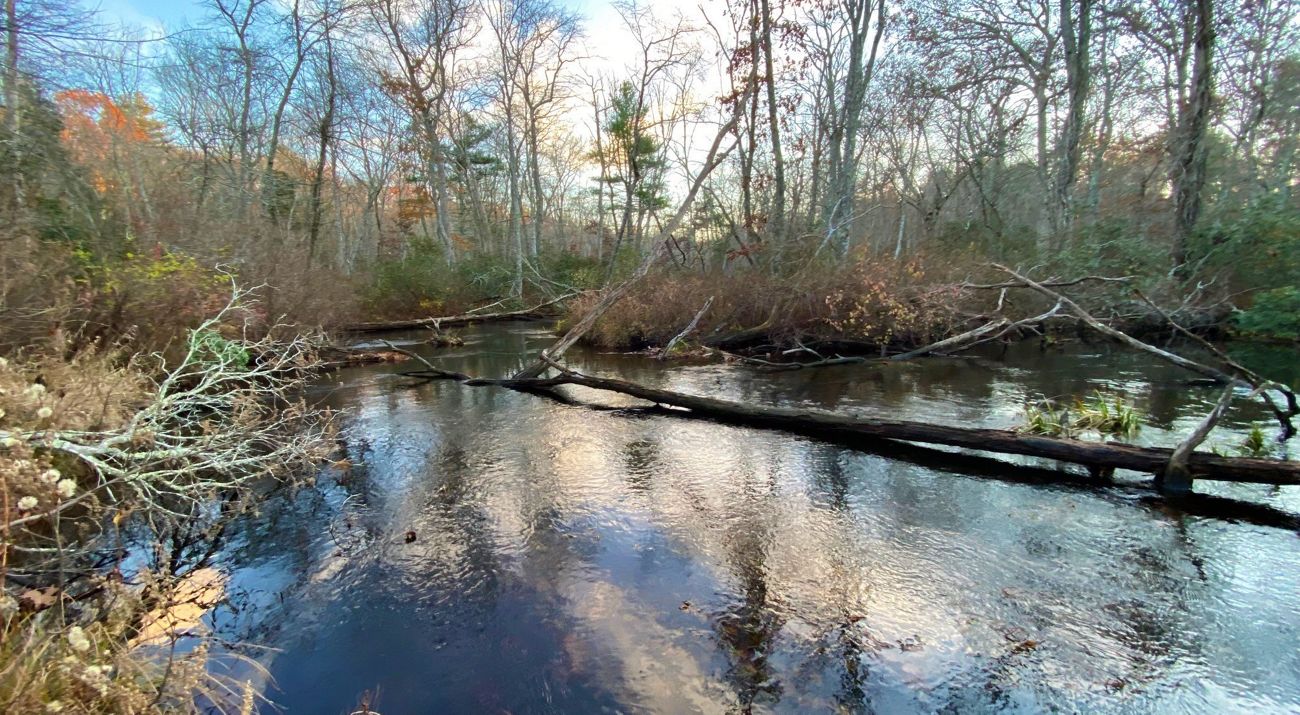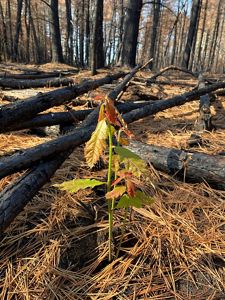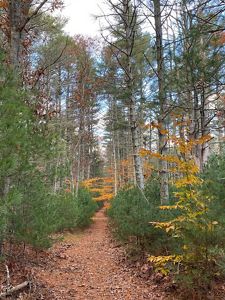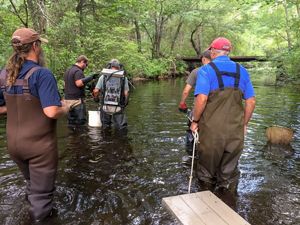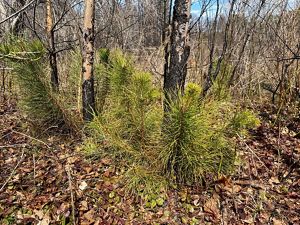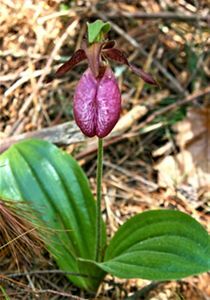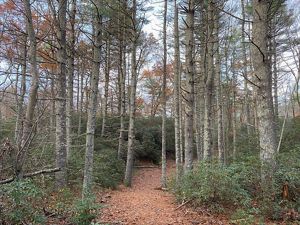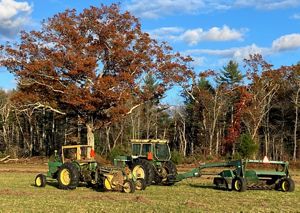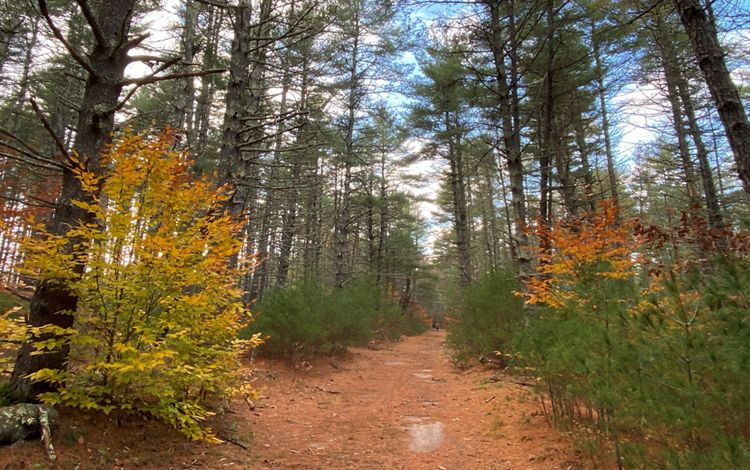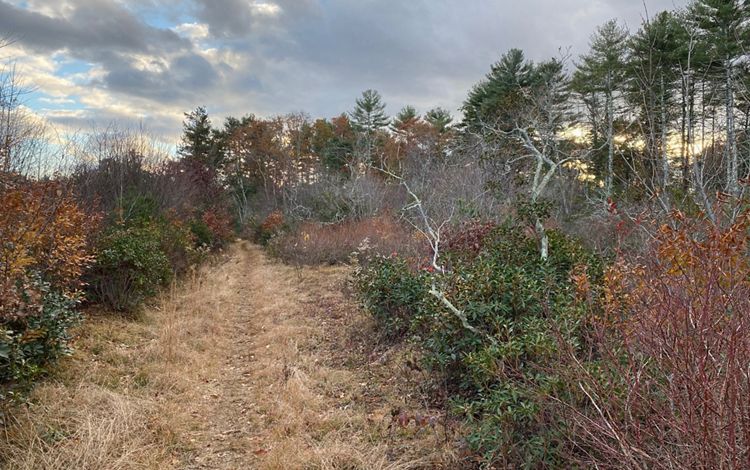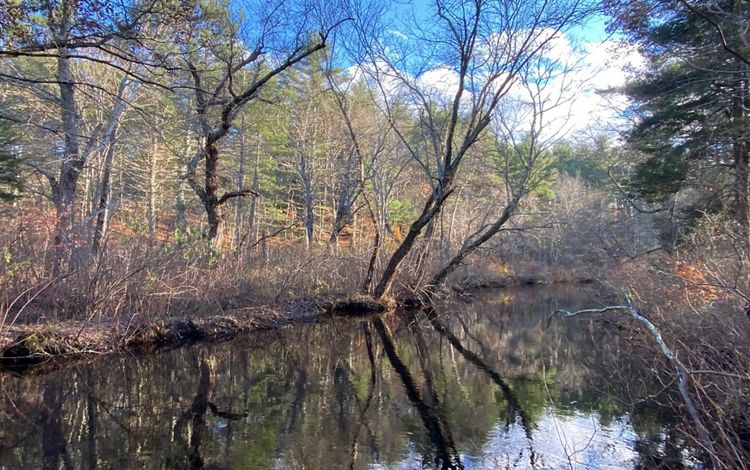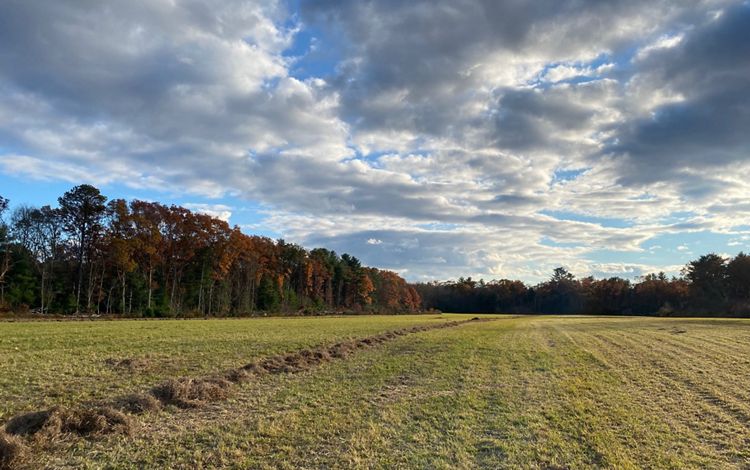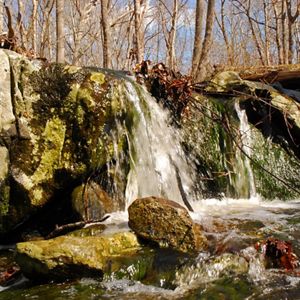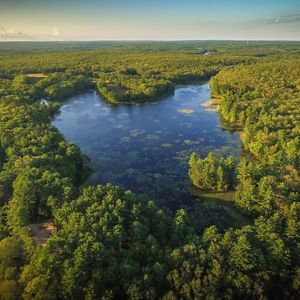Description
The Queen’s River Preserve offers a short, easy hike to one of Rhode Island’s most pristine rivers. The Queen’s River—cold and largely forested—forms the western boundary of the preserve.
Old town roads now serve as wide, flat hiking trails that wind through tall pine woods, some charred as a result of a fire in 2023. Highlights include a historic cemetery, views of the Queen’s River, and a long, open hayfield that is actively managed by a local farmer. Two small stone foundations lie just off the main trail, hidden in plain sight.
Dogs must be leashed at all times.
The Queen’s River Preserve is open to archery hunting for deer, under rules updated annually by RIDEM. Hikers are required to wear fluorescent orange from September 15 to January 31. Fishing is not permitted.
